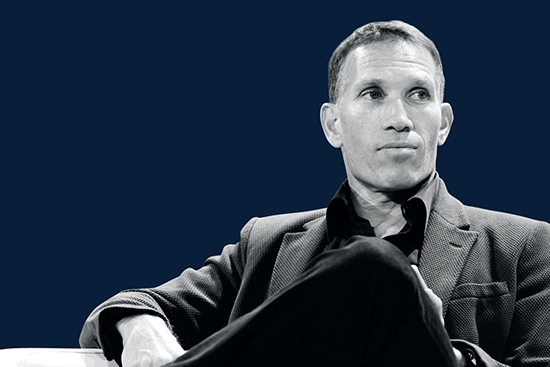高层换血日,股市抄底时——CEO更替令4只个股看多

|
最近几年,很少有哪家公司换CEO换得像美泰公司这样快。从2015年到现在,美泰的CEO宝座已经三次易主。最近一次是去年4月,前谷歌高管玛尔戈·乔治亚迪斯从美泰离职,由伊农·克雷兹接任。 美泰走马灯似的换CEO其实并不令人意外,毕竟克雷兹的几个前任都没能阻止住公司业绩下滑的颓势。从2014年到2017年,美泰的营收下跌了23%,在亚马逊的强势绞杀下,美泰的线下零售伙伴(如玩具反斗城等)纷纷溃不成军,美泰的销售网点越来越少。与此同时,它的竞争对手们却依然保持增长。可想而知,美泰的股价也是老一年不如一年。 不过从最近公司领导层的变化看,投资者还是能找到一些希望的。不少案例表明,CEO的离职往往反映了企业深层的大范围战略调整,因而经常会给企业及其股东带来显著利好。 眼下企业界正在经历一轮深度震荡,投资者需要考虑的变革因素也比以往多得多。根据再就业公司Challenger, Gray & Christmas的数据,2018年,美国有1452家拥有10名以上员工的企业的CEO离职,比2017年足足多出四分之一,这也是自2008年经济危机以来CEO离职人数最多的一年。在离职者中,有四分之一被归为“退休”,还有一部分CEO是因为性骚扰等不当行为离职的。总之,CEO的高离职率表明,新一轮的衰退趋势已经影响了很多企业的收益和股价,而这些企业也正在通过人事调整,积极适应不断变化的外部经济环境。 在某些情形下,CEO更替对企业可能是特别有利的。比如一份最近发表的研究表明,如果一家公司的CEO和董事会在战略上存在分歧,并由此导致CEO下课,则公司更有可能在长期实现显著的业绩提升。 该报告的作者研究了1995年至2012年间发生的97起CEO因与董事会存在战略分歧而被迫离职的案例。该报告的作者之一、密苏里大学的金融学教授昆塔拉·普克萨东指出:一般来说,并不是CEO一离职了,企业的境况就会一夜之间出现改善。CEO离职引发的业务问题和大众的消极反应一般会使公司股价遭受长达12个月的影响。不过接下来几年,这种影响会越来越小。普克萨东的研究团队发现,在CEO离职三年之后,这类企业的股价都恢复到了行业平均水平——也就是说那些选择在低位抄底的股民都赚了一笔。 为何会发生这种现象?原因是在领导层多次变动后,企业重新调整了自己的长期目标。这些企业新招募的CEO更加青睐长期奖励机制——比如限制性股权,而不是短期奖励机制——比如达到季度业绩目标就拿奖金。另外,这类公司也更加注重自我改革,而不是利用股票回购等策略刺激短期股价。在这些公司领导层发生更替的三年后,它们的资本支出平均增长了36%——这是一个非同寻常的速度。而它们的资产账面价值也大幅上升,这也是企业内部投资增加的一个迹象。 |
In recent years, few corner offices have had doors that revolved as fast as Mattel’s. The toymaker has replaced its CEO three times since 2015—most recently last April, when former Google executive Margo Georgiadis stepped down from the post, to be replaced by Ynon Kreiz. The turmoil isn’t surprising: After all, Kreiz’s predecessors weren’t able to stanch the decline in Mattel’s revenues, which dropped 23% from 2014 to 2017. With brick-and-¬mortar retail partners like Toys “R” Us struggling or collapsing under the Amazon onslaught, Mattel has fewer sales outlets, even as the ranks of its competitors grow. And Mattel’s stock price, to borrow a phrase from one of its vintage games, has gone Ker Plunk. But investors can find reason for hope in Mattel’s most recent leadership change. There’s growing evidence that CEO departures that are driven by a wider strategic realignment often result in substantial improvements—for the business and its shareholders. These days, investors have many more changes than usual to consider. According to outplacement firm Challenger, Gray & Christmas, 1,452 CEOs at U.S. companies with more than 10 employees left their jobs in 2018—a 25% increase from 2017 levels and the largest wave of departures since the 2008 recession. About a quarter of those leave-takings were classified as retirements, and a handful were driven by #MeToo issues and other misconduct. But the high turnover also reflects businesses coping with a changing economic environment in which recessionary trends have begun to undermine their earnings and share prices. Amid all this disruption, there’s one category of CEO change with potential to be particularly profitable. A recently published study indicates that in situations in which the CEO and the board disagree on strategy, leading to the chief executive’s resignation or dismissal, companies are more likely to see a meaningful performance boost over the long term. The study’s authors found 97 cases between 1995 and 2012 in which a CEO was forced to leave a position owing to a disagreement over strategy with the board. Improvement doesn’t happen overnight, explains co-author and University of Missouri finance professor Kuntara Pukthuanthong: The business problems and public disagreements surrounding the departure often depress the company’s share price for the 12 months after the turnover. Over the ensuing years, however, such businesses narrow the gap. Pukthuanthong’s team found that three years after the change, stock performance for companies in the group was back on par with their industry’s—rewarding those who took a chance on the stocks at their nadir. One reason for the success has to do with the way companies reoriented around longer-term goals after many leadership changes. The new hires the team studied were more likely than their predecessors to get more of their compensation in the form of long-term incentives, like restricted stock options, than in short-term ones, like bonuses for hitting quarterly benchmarks. Not coincidentally, there was evidence that such companies focused more on improving themselves than on using tactics like share repurchases to lift their stock in the short term. Three years after the firms underwent leadership changes, their capital expenditures had risen by 36% on average—an unusually fast pace. The book value of their assets had risen substantially too, another sign of greater internal investment. |

|
当然,去年有多少前任CEO下岗,就有多少新任CEO上位,这也给投资者带来了很多抄底的机会。《财富》对部分管理层变动的企业进行了研究,发现如果一些公司的新管理层如果战略执行得好,他们的股票很可能将出现飙升。 首先是吉利德科学公司(Gilead Sciences)。这家公司的前任CEO约翰·米利根于2018年年底辞职。在米利根的任期内,该公司股价下跌了24%。在几家新晋竞争对手的围剿下,作为该公司主打产品的丙肝药物销售收入大幅下降。Cowen公司的分析师菲尔·纳多认为,到2023年,吉利德丙肝药物的销售额将从2017年的91亿美元下跌至不足30亿美元。瑞士罗氏的前高管丹尼尔·奥迪将于今年3月接任吉利德公司CEO,他的任务是从其他领域弥补这笔损失——比如在抗癌药物领域,吉利德最近刚刚收购了凯特制药(Kite Pharma),从而获得了后者的免疫疗法药品生产线。吉利德也在积极拓展抗艾滋病药物市场。它的抗艾特效药Truvada(中文名为特鲁瓦达)和Genvoya(中文名为捷扶康)可用于治疗全球53%的艾滋病感染者,销量也比上年增长了12%。纳多表示,以该公司目前的股价看:“可以说是一只很有价值的股票”。 其次是施乐(Xerox)。光是印刷行业的日薄西山就已经够让它闹心的了,然而在2017年到2018年的大部分时间里,施乐居然还有闲心跟“华尔街狼王”卡尔·伊坎斗得其乐无穷。《财富》最近曾专门撰文揭露过双方的龃龉。简言之,伊坎和另一位大股东达尔文·迪森反对施乐CEO杰夫·雅各布森将施乐与长期合作伙伴富士控股进行合并的动议。在这两位投资人的操作下,施乐选出了一个新的董事会,与富士控股合并的计划打了水漂,雅各布森也只得“下课”,交权给现任CEO约翰·维森丁。直到现在,施乐还在和富士就10亿美元的分手费打官司。摩根大通的分析师保罗·科斯特表示,在这出闹剧背后,人们忽略了施乐仍然有“产出大量现金”的能力。施乐的现金流占到了营收入的10%,这是非常了不起的。这样一来,施乐就有能力维持5%的股息率,并有余力进行创新投资,这有利于公司抵消印刷业务下滑造成的损失。维森丁计划在今年2月公布他的战略。至于他能否给出一份让大家认为有希望的路线图,投资者们将拭目以待。 |
The past year’s bumper crop of new CEOs, of course, leaves investors with plenty of opportunities to take a flier on a business in mid-shake-up. Fortune took a look at companies in that category and identified a few whose stocks could surge if new management executes well enough on a new vision. John Milligan stepped down at the end of 2018 as CEO of Gilead Sciences, which endured a 24% decline in its share price during his tenure. Revenue from Gilead’s hepatitis C drugs, formerly blockbusters, has plummeted as rivals have entered the scene: Cowen analyst Phil Nadeau estimates sales will fall from $9.1 billion in 2017 to just under $3 billion by 2023. Former Roche Holdings executive Daniel O’Day will become CEO in March with a mandate to make up those losses in other areas—including in cancer treatment, where Gilead’s recent purchase of Kite Pharma gives it a portfolio of immunotherapy drugs. Gilead is also capturing significant growth in its HIV segment. Its therapies, including Truvada and Genvoya, are used to treat 53% of those infected with HIV worldwide, and sales rose 12% over the past year. At today’s prices, “it’s very much a value stock,” says Nadeau. As if operating in a declining industry like printing weren’t challenging enough, Xerox spent much of 2017 and 2018 in a battle with activist investor Carl Icahn. As Fortune chronicled in a recent feature, Icahn and fellow shareholder Darwin Deason opposed CEO Jeff Jacobson’s efforts to merge Xerox with longtime partner Fujifilm Holdings. The two investors secured election of a new board, the Fuji deal fell through, and Jacobson gave way to current CEO John Visentin. Xerox is still fighting with Fuji over a $1 billion breakup fee. But the drama has obscured the fact that Xerox “generates a bunch of cash,” says JPMorgan analyst Paul Coster. Its operating cash flow adds up to an impressive 10% of revenues. That gives the company the ability to support a 5% dividend yield, as well as the flexibility to invest in innovations that could help Xerox offset the decline in printing. Visentin is scheduled to outline his strategy in February; investors will be watching to see whether it looks like the road map to a rebound. |

|
另一家值得关注的公司是服务零售商Lands’ End,它是2013年从西尔斯控股拆分出来的一家公司。该品牌的标志性产品是卡其裤和休闲服饰,为了吸引年轻消费者,它的前任CEO费代丽卡·马尔基翁尼决定向更加时尚的设计转型。但她的战略既未得到消费者的追捧,也没有赢得董事会的支持。马尔基翁尼于2016年辞去CEO一职,由现任CEO杰罗姆·格里菲斯于2017年3月接任。格里菲斯恢复了品牌的原有风格,更加注重大衣和外套等产品。从短期看,他的战略对这价市值14亿美元的公司是有效的。公司的营业收入从2017年前三个季度的亏损,转为2018年同期的盈利1190万美元。C.L. King公司的分析师史蒂芬·马洛塔认为,如果该公司的销售增长率能继续提速(目前约为6%),那么Lands’' End可能是个不错的投资选择。马洛塔目前对该公司的股票持中立态度。 最后我们也不要忘了接连换了几位掌门人的美泰公司。美泰的现任CEO克雷兹来自电视制作行业,他的战略是对孩之宝等竞争对手采取跟随策略,同时通过大屏幕来与小朋友们建立纽带。2020年,一部真人版芭比娃娃电影将登陆各大影院,本片主演是曾获得奥斯卡影后提名的玛歌特·罗比。这也是克雷兹为了重振芭比娃娃这一品牌祭出的杀招。对费雪、小火车托马斯等稍显过时的老品牌,预计也会采取类似的社交媒体渠道进行包装。与孩之宝不同,美泰旗下的玩具很多都是自行生产的,而不是外包出去。克雷兹计划在今年年底前削减6.5亿美元的生产成本。这些举措已经开始对利润产生积极影响。当然,要让的投资者真正享受到他的改革红利,克雷兹还需要一种他的前任最缺少的东西——时间。(财富中文网) 本文的另一版本登载于2019年2月刊的《财富》杂志,题目是《首席执行官变动可能对公司有利》。 译者:朴成奎 |
A company further along in its revamping journey is clothing retailer Lands’ End, which was spun off from Sears Holdings in 2013. Its previous CEO, Federica Marchionni, sought to woo a younger demographic, moving a brand known for khakis and casual wear to more fashionable designs. But her strategy neither gained traction nor won over the board. She left in 2016, and current CEO Jerome Griffith replaced her in March 2017. Griffith has gone back to the company’s roots, focusing on coats and other outerwear. Short term, the strategy has worked for the $1.4 billion company. Operating income flipped from a loss in the first three quarters of 2017 to an $11.9 million gain over the same period in 2018. If the company’s pace of sales growth—currently 6%—accelerates, Lands’ End could be a good buy, says C.L. King analyst Steven Marotta, who’s currently neutral on the stock. And let’s not forget turnover-plagued Mattel. Kreiz, the latest CEO, comes from the world of television production, and he aims to follow the lead of Hasbro and other competitors by connecting with kids via the big screen. In 2020 a live-action Barbie film, starring Academy Award nominee Margot Robbie, will hit theaters as part of a revitalization of that iconic doll line; similar media splashes could turn around big but aging brands like Fisher-Price and Thomas the Tank Engine. Mattel, unlike Hasbro, makes many of its own toys instead of outsourcing the process. Kreiz is seeking $650 million worth of cuts to its manufacturing costs, among other areas, by the end of the year, and those efforts have already begun to improve margins. Of course, to yield results for investors, he may need something his predecessors didn’t get much of: time. A version of this article appears in the February 2019 issue of Fortune with the headline “The Hidden Upside to CEO Drama.” |













